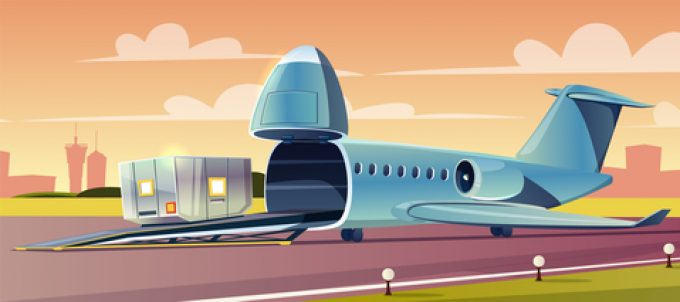Royal Mail cut in domestic air freight services a blow to contract freighter operator
A decision by UK postal service Royal Mail to remove five 737 freighters from service ...
TFII: SOLID AS USUALMAERSK: WEAKENINGF: FALLING OFF A CLIFFAAPL: 'BOTTLENECK IN MAINLAND CHINA'AAPL: CHINA TRENDSDHL: GROWTH CAPEXR: ANOTHER SOLID DELIVERYMFT: HERE COMES THE FALLDSV: LOOK AT SCHENKER PERFORMANCEUPS: A WAVE OF DOWNGRADES DSV: BARGAIN BINKNX: EARNINGS OUTODFL: RISING AND FALLING AND THEN RISING
TFII: SOLID AS USUALMAERSK: WEAKENINGF: FALLING OFF A CLIFFAAPL: 'BOTTLENECK IN MAINLAND CHINA'AAPL: CHINA TRENDSDHL: GROWTH CAPEXR: ANOTHER SOLID DELIVERYMFT: HERE COMES THE FALLDSV: LOOK AT SCHENKER PERFORMANCEUPS: A WAVE OF DOWNGRADES DSV: BARGAIN BINKNX: EARNINGS OUTODFL: RISING AND FALLING AND THEN RISING

As the airfreight market comes to a shuddering halt, the market is looking closely at capacity commitments that were made during the boom times.
Airlines have been betting on freighters: Air Canada, Astral, Avianca, Bluebird Nordic, CMA CGM, Emirates, Maersk, Qatar … whether it’s narrowbodies or widebodies, production or conversion, capacity is on its way just as the market begins to look shaky.
Boeing, of course, is confident. It will come as no surprise that its latest forecast shows that, yes indeed, more freighters are needed. Some 2,800 over the next 20 years, in fact, or 140 freighter orders a year. More even than Qatar can stomach. So is the industry in trouble?
No, according to Sanjeev Gadhia, CEO of Astral Aviation, which plans to double in size over the next three years, with a proper menagerie of aircraft types.
“The market is evolving. The 747s will be replaced by 777s, 737s will be replaced by A321s, 767s will be replaced by A330s. Older aircraft will be phased out as new ones come in.”
According to Boeing, about half of the new freighters will be used to replace older aircraft. It predicts 1,420 will be replaced, with 1,450 for growth over the next 20 years.
But is the confidence in growth justified?
Again, Mr Gadhia believes so – he sees demand growing.
“We are seeing new commodities, such as avocados, which used to go by sea, but now there is demand by air – the supermarket shelves need to be full at all times.”
Tim Strauss, CEO of Amerijet agreed. He said: “The expectations of consumers on products, and timing, are very different than they were 30 years ago. And if a commodity wants a faster solution, it has to be air cargo. There is good news to come.”
In the short term, however, it may be more challenging. As the retail market takes a dive, forwarders who committed to a lot of capacity, at high prices, could find life expensive. And, as Mr Strauss pointed out, aircraft coming last year “would have been great. Now, not so much. The market keeps changing”.
He added that, in fact, short-term difficulty for airlines receiving capacity is not only the capacity.
“Aircraft are in some ways the easy part. Flight crews are a challenge and most of us are paying a premium for that. And we have to find simulators for them to train on. It takes a large number of people for every plane you take on. The biggest challenge is personnel.”
Airline costs will go up just as revenues go down – but if you can weather the storm, the future could be bright, says Gabriel Oliva from Avianca Cargo, who summarised: “There will be short-term headwinds, but in the medium and long-term, I am very confident.”
It will, of course, also depend on how and where the capacity is sold.
Boeing predicts 38% of the new capacity will go to Asia Pacific and 32% to North America, as e-commerce networks continue to boom. The more saturated market of Europe will account for 16%, with the Middle East & Africa taking 9% and Latin America expanding by just 5%.
For now, as rates fall, airlines are hoping to keep them above pre-Covid levels. And, with significant geopolitical risk, labour strikes, climate change and unlimited potential for other disasters, cargo airlines could benefit again.
“We are the ambulance-chasers of freight,” said one senior airline executive. “War, pandemics, disasters – it all boosts demand, and prices.
“But don’t quote me on that.”
Comment on this article